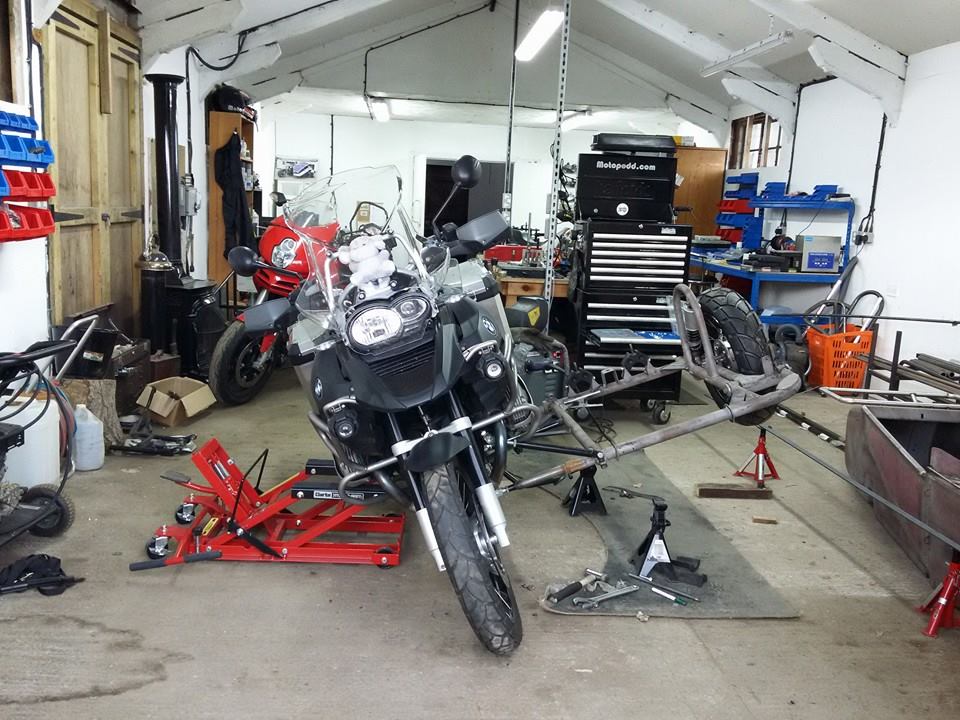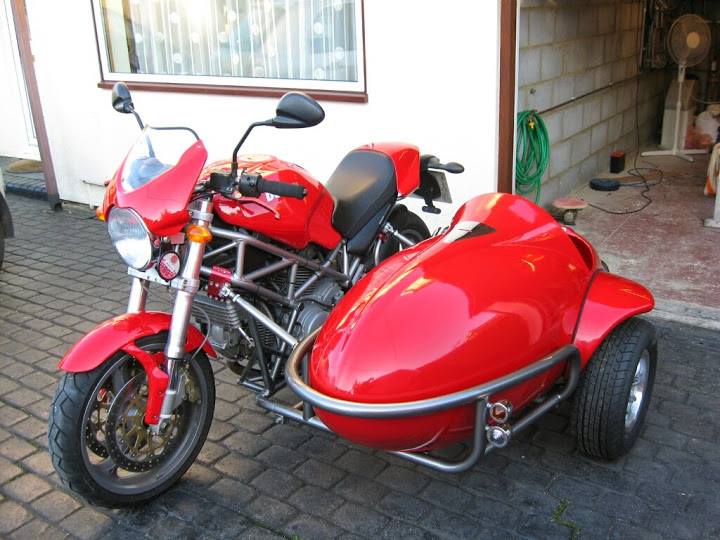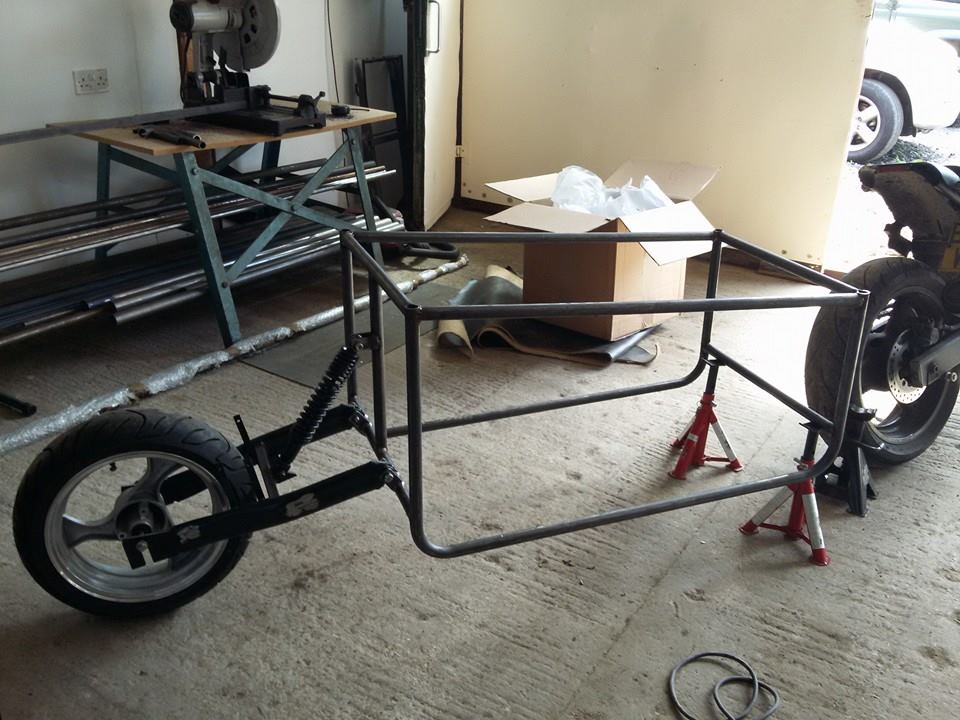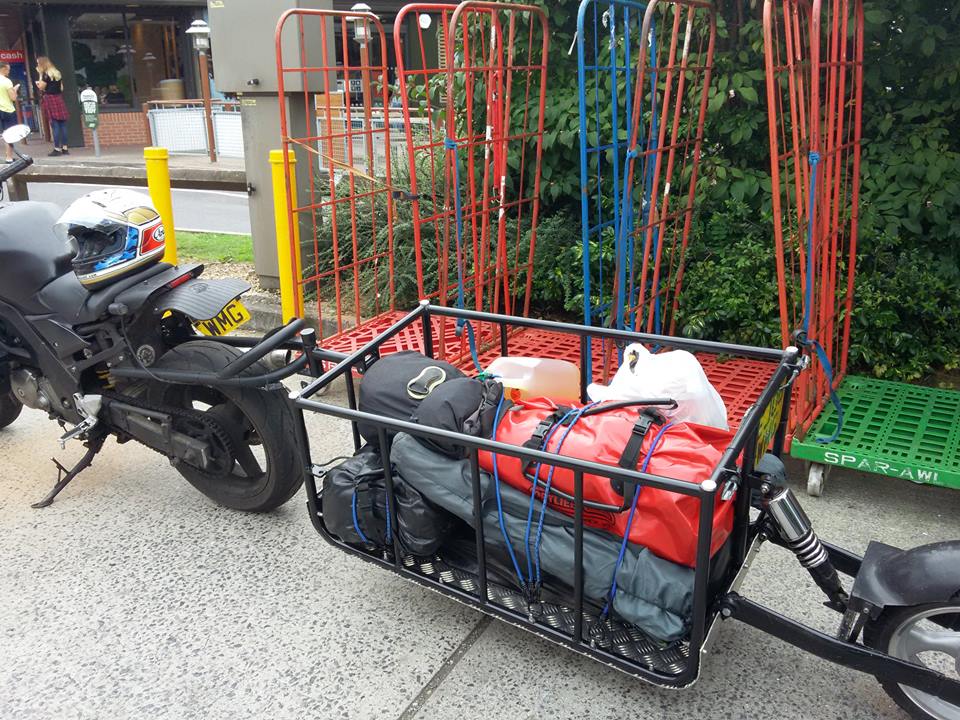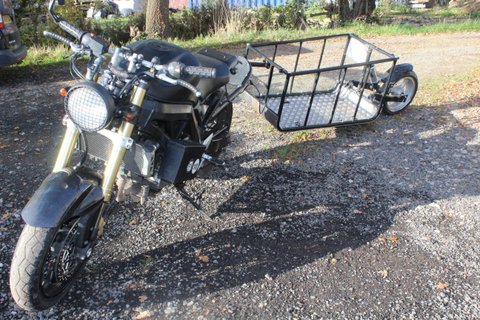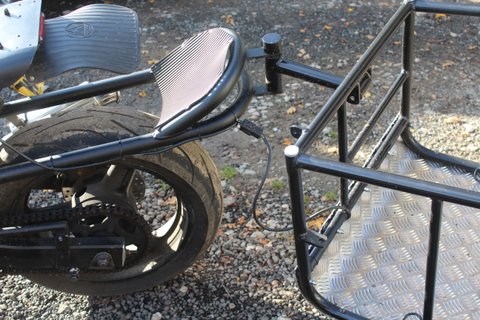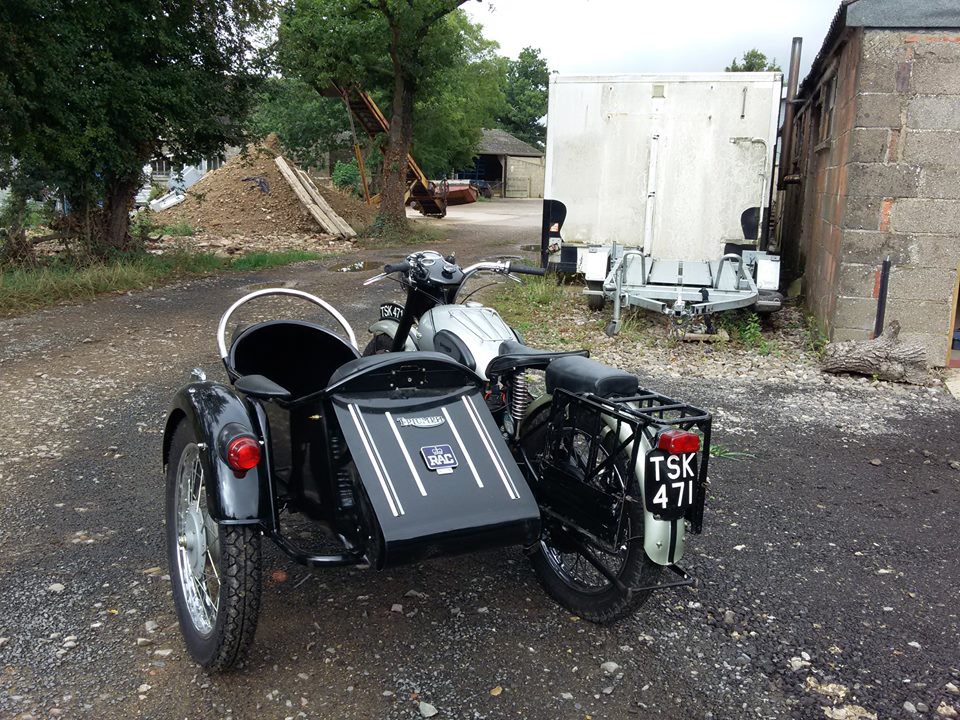Trail(er) Blazer
Three Wheels Better
John Newman
In the second of our series on independent and innovative bike builders we visit 'Three Wheels Better,' a unique operation providing engineering and design services for an almost cult group of motorcyclists: the sidecar drivers.
Along a track just off the M40 motorway near Oxford, a group of farm buildings have been converted into workshop and storage facilities. Not uncommon, as some farmers seek to diversify and use redundant buildings to replace lost agricultural income.
A couple of these buildings are occupied by Rod Young, assisted by his colleague Colin. Rod designs and builds one off sidecar creations, but will also rebuild and renovate 'chairs' that have fallen into disuse and disrepair, and supply and fit a sidecar to almost any bike from the range supplied by the well established Dutch company, EZS.
There's a back story here...
Rod and I used to write for the same bike magazine for a number of years, but we lost contact a few years ago, as our lives followed different paths. Then, this summer, in a small hill town in Aragon, Spain, we met in the narrow main street, where the handful of foreign tourists that stayed there headed in the evening to scan the bars and restaurants. We had both decided to visit the Aragon Moto GP round, and in a moment of pure serendipity, had booked accommodation in the delightful and spectacular town of Morella.
Rod's trade and talent is as a design engineer, and he has had an interest in the extra wheel on the side of a motorcycle for a number of years now. He's a good wordsmith too, turning out entertaining articles, which in the talent lottery is unfair, as I can hardly turn a spanner. No matter; along with our partners, we spent an evening catching up and ranging over what biking - and other life things - we'd been up to.
Rod told me he'd been busy moving from the small workshop he'd previously occupied to a more spacious set of buildings, and expanding his sidecar interests and customer base. He also mentioned a single wheel trailer he had designed and built. Not only that, he and Cheryl, his partner, had hitched it to one of their solo bikes and headed off for a camping expedition to see if it all worked. It did.
Out came the Smartphone with pictures of the trailer, accompanied by an explanation of how it was attached to a solo and steered etc. That was all very well but my limited practical understanding needed more than small pictures, and I found it hard to envisage this device on the road. The only way to rectify the gap in my understanding was to visit the workshop and ride it. Fortunately, Rod agreed.
Three Wheels Better
It was one of the mild and dry autumn days we've been enjoying. I drove past the various large agricultural vehicles parked up in the yard and located 'Three Wheels Better'. The bike and trailer were waiting outside, hitched to an SV650 Suzuki that has been knocking around for some time and is used for various prototype purposes. But before I put the riding gear on and headed out to the Oxfordshire lanes, I was given a brief tour.
Colin was working on the restoration of an old 50s Panther sidecar that the owner wanted as original as possible, rather than buying a new model. Rod was fabricating a 'chair' to go on the side of a giraffe-like Yamaha 660 Super Tenere, that would be used on a global tour. There was a very nice Triumph Legend in the workshop coupled up to an 'off the shelf' sidecar from the Czech Republic – this one was for sale. On the bench sat a Jawa 350 two stroke twin engine, a recent purchase to go into Rod's winter hack.
The prototype trailer - as yet unnamed, as far as I know - is an open tubular steel construction, with a single wheel and suspension unit at the back. It measures 195cms from the tow bar to the rear wheel, which is 5cms within the overall limit the regulations allow – who would know there are even regulations/size restrictions for trailers towed behind motorcycles? It's 60cms wide.
Rod explained that he'd left the prototype design open as most motorcyclists pack their gear into dry bags anyway. The trailer is aimed at the rally and show-goers market, and those who like to camp on their travels. He can, and probably will, make smaller capacity versions and could easily encase the open construction with a sheet metal bodywork, if required. The price will come out at around £900, fitted to the bike with all electrical connections.
In Spain, when Rod was explaining the vehicle, I had a problem getting my head around the concept of leaning with a trailer. Now that I'd seen the creation, the steering became clear. But it was with some trepidation that I manoeuvred this lengthy beast towards the public highway. Despite Rod's assurances that I would not notice the difference once I was on the road, I did adjust the mirrors so that I could see how the trailer behaved in real life, so to speak.
Something was bothering me
I had travelled some of these roads before and knew there were bends that would test the trailer and my trepidation. I'd also head for a main road, where I knew there were a few roundabouts. A sure test of rideability and stability. It was true, the trailer did not affect the bike's handling, but through a series of quite tight bends, the loud and distinctive sound of metal against Tarmac caused me to throttle back a bit. I'd grounded the trailer on a left-hander; it was something Rod had encouraged me to try, but I didn't manage it on any roundabout
circulations.
Even though the ride was sound and stable, something was bothering me. It was a strange feeling that although I was, in effect, riding a solo, I felt as if the bike should sit upright at junctions and crossroads without the riders' feet down, as the conventional concept of a trailer is to convert the bike into a vehicle that has two wheels at the back, instead of one.
Exchanging experiences back at the workshop, Rod acknowledged this when he first rode it. But it was a feeling that disappeared the more time spent with the outfit. And what 'cured' me of this psychology was turning the whole plot around a few times. The trailer hardly affects the turning circle you would expect to make on a solo, and if you were in a tight spot in terms of manoeuvrability, the trailer can be disconnected in seconds.
One pin holds the trailer in place and, as a consequence, it is quickly detachable and then very light to move around. The current suspension unit is an 'old' one that Rod had in the workshop and went some way to explaining how I'd been able to ground the side. On a production trailer, he would use a new 'taller' unit to prevent this.
Sidecar Specials
Included in the price of manufacture is the fitting of a tow bar frame to the solo machine. Again, if a rider wanted to detach this at any time, just four bolts would remove it. The advantage here is that you could travel with the trailer to set up camp somewhere, detach it and the tow bar frame, and use the solo bike to tour etc.
After we'd exchanged trailer views and experiences, Rod showed me another building: his barn, that will eventually become a showroom for his sidecar specials, but at the moment is a store with surprises. He has a Ducati Multistrada that he used in the summer, but he's intending to design and build a sidecar with a trellis type chassis to match the bike's frame. It will hopefully be ready for sale in the spring.
His Jawa is there waiting for a new engine to be slotted in. And then something I didn't expect to see: a hill climb race car. Built by his father in the 70s, the car has a Triumph Trident T160 engine powering it -one of the last engines to come out of the Meriden factory. Rod's father was one of the first hill climb and sprint car racers to use motorcycle engines. This one was tuned by the well-known Triumph specialist Norman Hyde, and churns out 120bhp - Rod remembers rebuilding it when he was just sixteen years old. It sat for twenty years but still fired up after all that time, and it will now be converted to a (very fast) trike for the road.
If your motorcycle thoughts turn to sidecars, and you want a special designed and built, or if you want one of the EZS models attached to your motorcycle, contact Rod at
www.threewheelsbetter.uk. You can find lots of good info on their Facebook page too.
Comments
23/11/15 Rods a superstar
26/11/15 cool work but why take the freedom and maneuverability of a motorcycle and give it a sidecar? just use a car!


